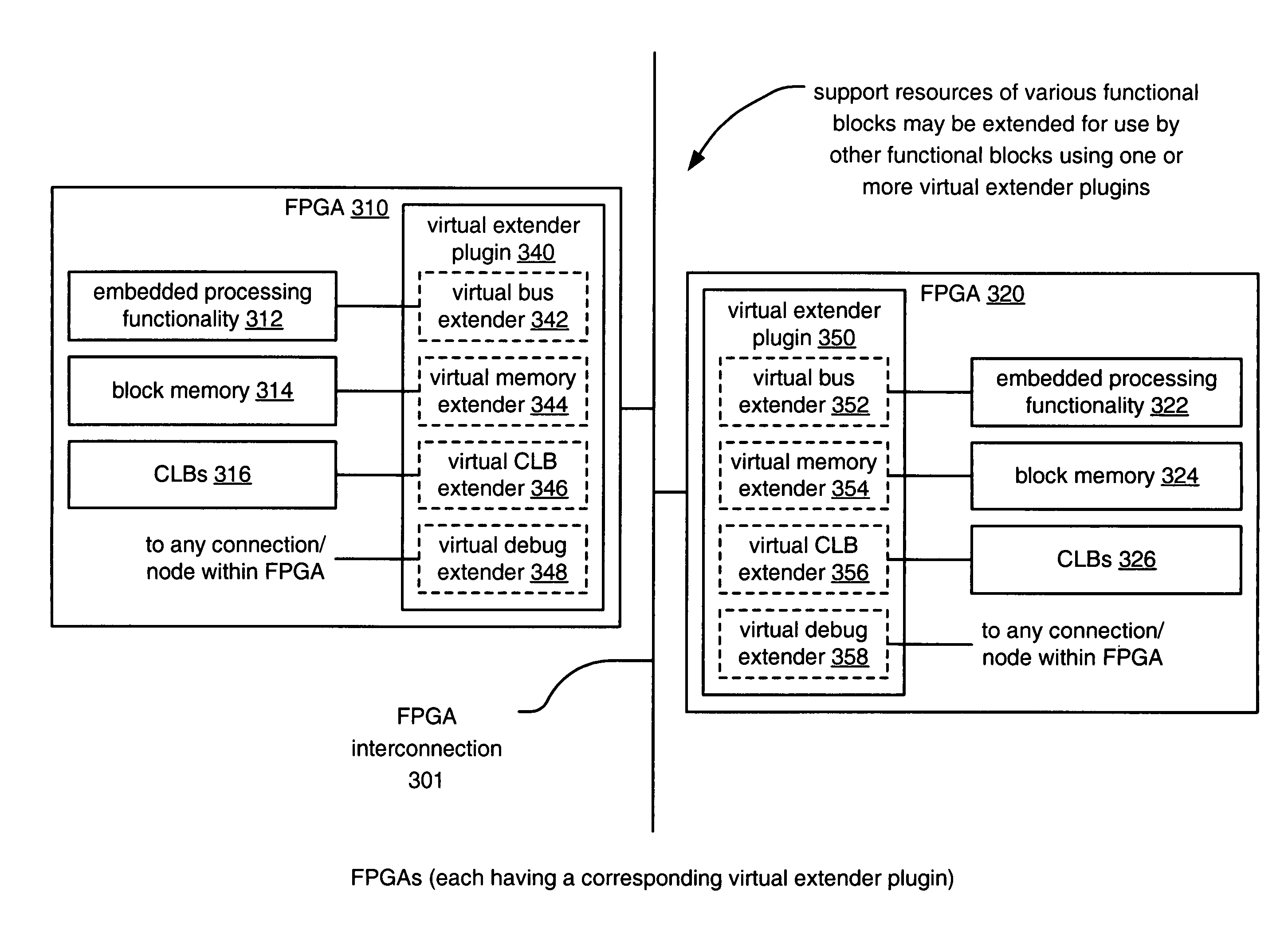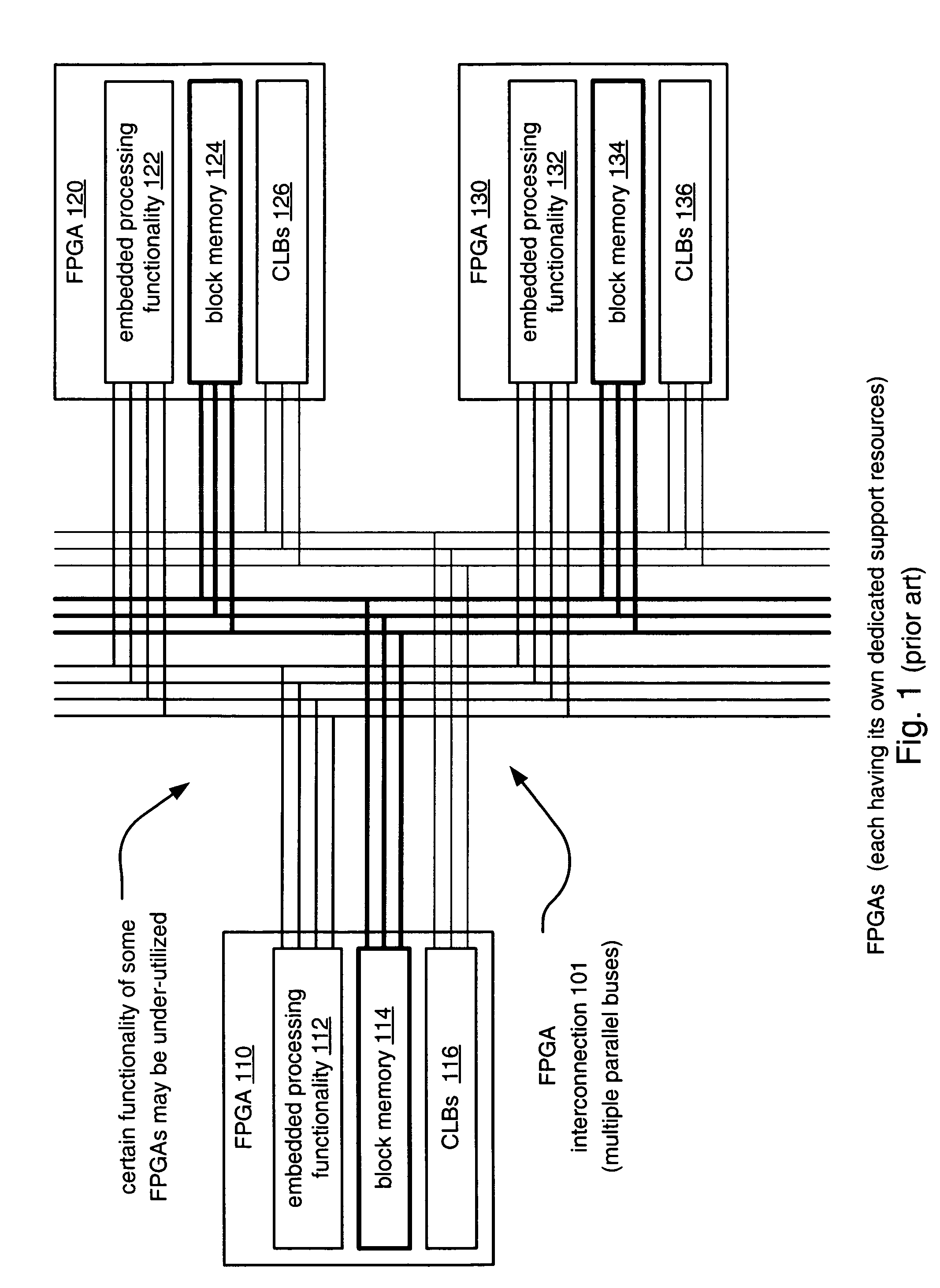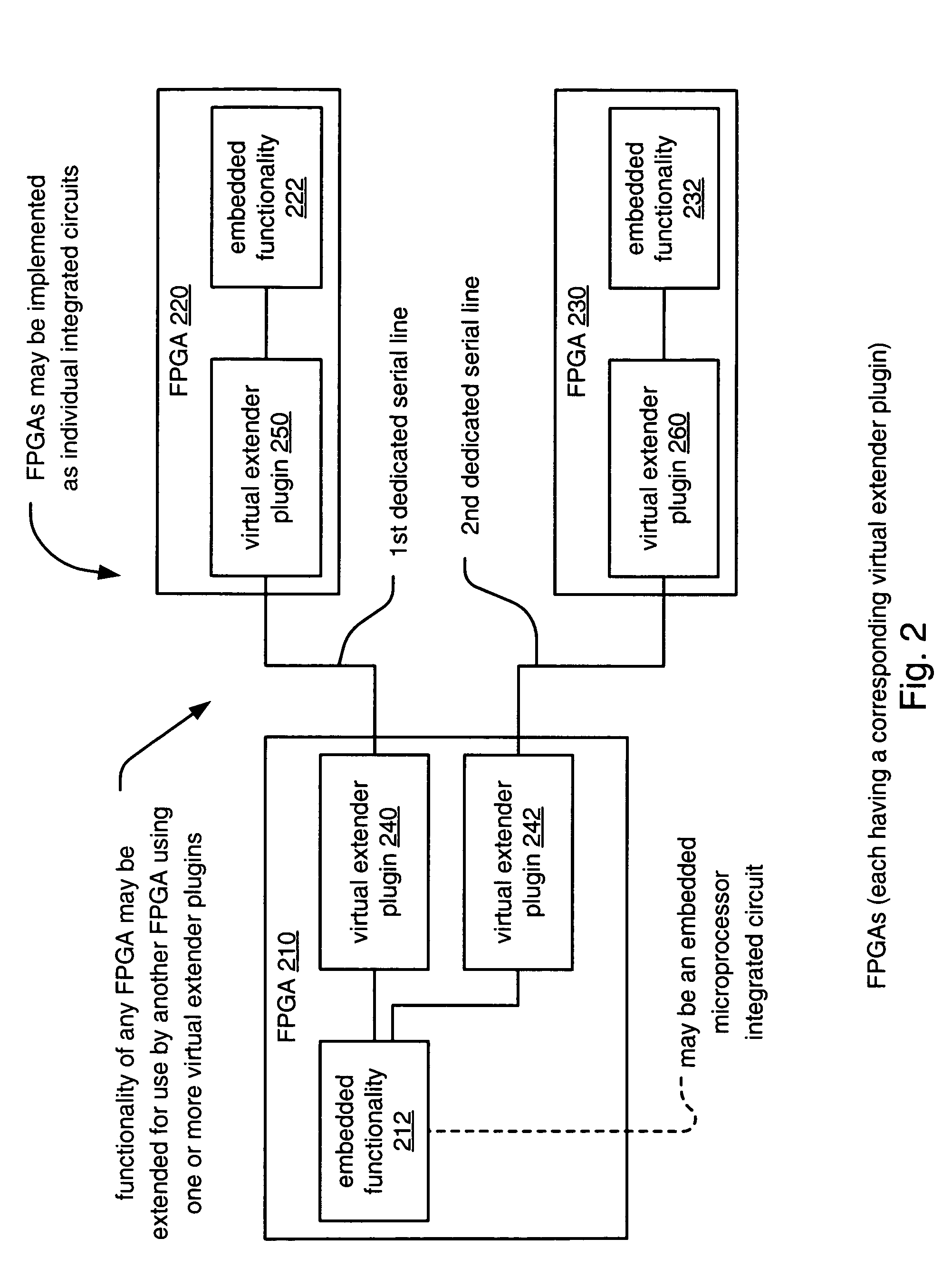Creating virtual extender plugins using MGTs
a virtual extender and plugin technology, applied in the field of electronic devices, can solve the problems of inflexible changes in allocations for particular devices, inability to help present devices to perform any more efficiently, and inefficient allocation of resources, so as to achieve fast operational speeds of mgts, increase processing capabilities of devices, and no performance degradation
- Summary
- Abstract
- Description
- Claims
- Application Information
AI Technical Summary
Benefits of technology
Problems solved by technology
Method used
Image
Examples
Embodiment Construction
[0025]A novel approach is presented herein by which a virtual extender plugin allows a user seamlessly to bridge between various functional blocks on different devices when designing and implementing electronic devices. These various types of functional blocks may include memory, embedded, microprocessor(s), microprocessor peripherals, CLBs (Configurable logic blocks), I / O blocks (Input / Output circuits and / or ports), FIFOs, MGTs (Multi-gigabit transceivers), DCM (Digital Clock Managers), multipliers, adders, DSPs (digital signal processing circuit blocks), and even other categories of functional blocks including various application specific circuits. These virtual extender plugins, allow for the efficient use of the various untapped resources that may be provided by functional blocks of another device. For example, a given functional block on one PLD may employ one or more virtual extender plugins to have access to and to use the various untapped (or relatively lightly tapped) funct...
PUM
 Login to View More
Login to View More Abstract
Description
Claims
Application Information
 Login to View More
Login to View More - R&D
- Intellectual Property
- Life Sciences
- Materials
- Tech Scout
- Unparalleled Data Quality
- Higher Quality Content
- 60% Fewer Hallucinations
Browse by: Latest US Patents, China's latest patents, Technical Efficacy Thesaurus, Application Domain, Technology Topic, Popular Technical Reports.
© 2025 PatSnap. All rights reserved.Legal|Privacy policy|Modern Slavery Act Transparency Statement|Sitemap|About US| Contact US: help@patsnap.com



